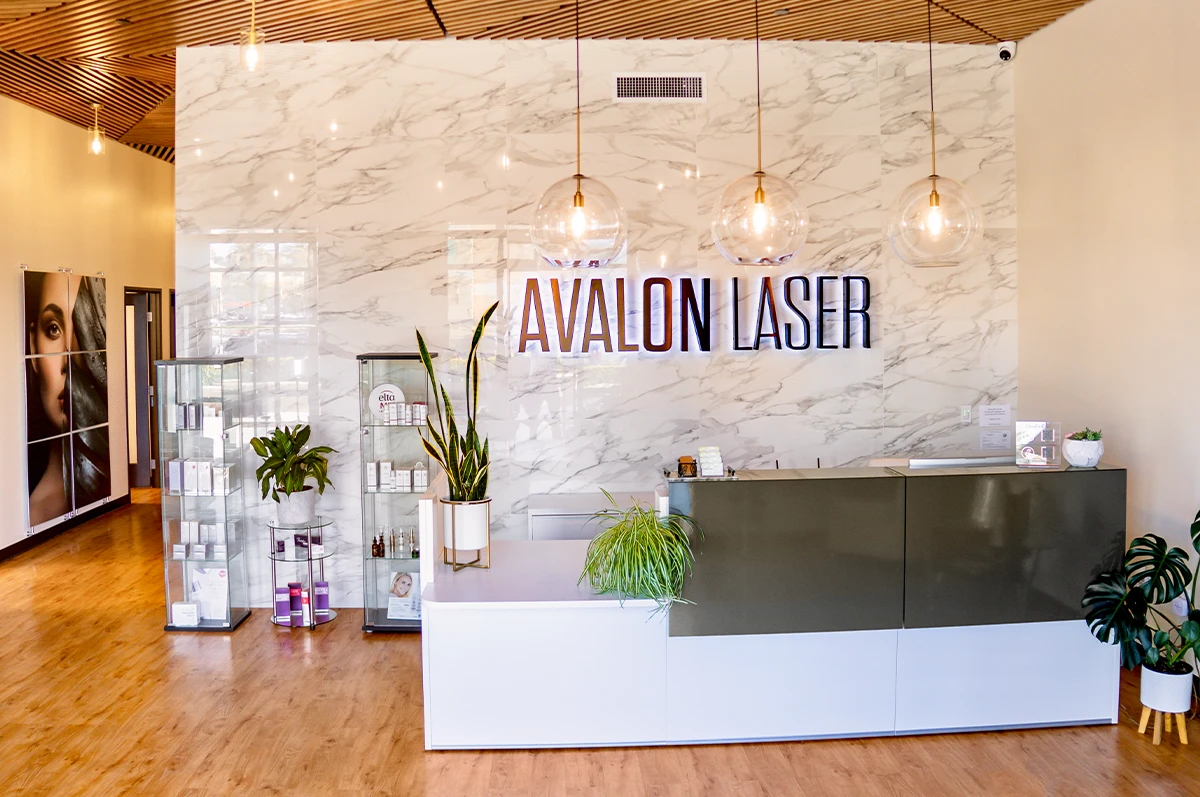When spending time outdoors, your skin often reflects the result of sun exposure. Two common outcomes are freckles and sunspots. While they may look similar, understanding the difference between freckles and sun spots is crucial to addressing concerns about skin damage, sun exposure, and even potential risks like skin cancer.
This guide will explain everything you need to know about freckles vs sun spots, from causes and appearance to how they develop, where they occur, and the most effective skin treatments available at Avalon Laser.
Freckles
Appearance
Freckles are small flat pigmented spots on the skin, usually darker than the person’s skin tone. Typically light brown or tan, freckles appear on areas of your skin that are frequently exposed to the sun, like the face, arms, and shoulders.
Cause
Freckles are the result of increased melanin production triggered by uv rays from the sun. People with fair skin and red hair are genetically predisposed to develop freckles more easily. In most cases, freckles are harmless, and their development is a sign of sun exposure rather than a medical concern.
Development
Freckles may become more noticeable after repeated sun exposure, especially during summer. Although freckles are genetic, they still develop freckles as a result of sun exposure. The radiation from the sun stimulates melanocytes in skin cells, increasing pigment.
Location
Common areas of the skin where freckles develop include the cheeks, nose, forehead, arms, and chest. Any place your skin is exposed to UV radiation is a candidate for freckling. This is why sun protection like sunscreen with a high sun protection factor is essential to protect your skin.
Sunspots
Appearance
Also called age spots, liver spots, or brown spots, sunspots are usually larger than freckles and appear as flat spots of pigment. These dark spots range from light brown to dark brown, and often have defined edges.
Cause
Sunspots and freckles both result from UV exposure, but sunspots tend to be more common with aging and long-term sun damage. They are often considered sun damage and not genetic.
Development
Sunspots vs freckles differ in how they form. While freckles are small, appear early in life, and may fade, sun spots and freckles form differently. Sun exposure can lead to sunspots over years of cumulative damage. They emerge as skin pigmentation changes in older individuals who spent significant time in the sun.
Location
Sunspots most often appear on areas exposed to the sun, such as the face, hands, chest, and back. These are typical spots or liver spots associated with aging and chronic sun exposure.
Do Freckles Fade Over Time?
Yes, freckles can fade. Since they are largely influenced by UV light, freckles may lighten during months of low sun exposure and darken during sunny seasons. Freckles fade more easily than sunspots and may even disappear entirely with age or use of skin care solutions and skin treatments like chemical peels or dermapen.
Freckles aren’t caused by skin damage in the same way sunspots are. However, if you’re seeking a more even skin tone, treatments that renew new skin can significantly reduce their appearance.
Can Sun Spots Be Permanent?
Unfortunately, sunspots tend to be more permanent than freckles. They are a sign of sun damage and form deep within skin cells. Though not dangerous, these pigmented spots can cause cosmetic concerns. Fortunately, skin treatments like laser treatment or chemical peels can help reduce them. Some sunspots vs freckles treatments also target skin discoloration and skin pigmentation irregularities caused by UV rays.
Are Either a Sign of Skin Cancer?
In general, freckles or sunspots are not cancerous. However, it’s important to conduct regular skin checks, especially if a spot on your skin changes in size, shape, or color. Moles that become raised, irregular, or bleed may be a sign of skin cancer.
If you’re uncertain whether a brown spot is a freckle, mole, or age spot, it’s wise to consult a dermatologist. Knowing how to tell the difference between freckles or sun spots, or a potentially cancerous mole, could be life-saving. Sun exposure affects all skin types, and regular skin care and monitoring are essential.
Prevention and Protection
The best way to protect your skin from freckles and sun damage is prevention. Use broad-spectrum sunscreen every day, even when it’s cloudy. Avoid the sun during peak hours, and wear protective clothing. This reduces sun damage and controls the formation of freckles based on sun exposure.
Sun exposure can also trigger pigmentation changes like freckles, sunspots, and even moles in people of all types of skin pigmentation. With the right sun protection, you can help preserve your skin’s clarity and tone.
Effective Treatment Options at Avalon Laser
Whether you’re dealing with freckles, sunspots, moles, or uneven skin tone, Avalon Laser offers personalized skin treatments that target unwanted pigmentation:
- Laser treatment helps reduce spots on the skin by targeting skin cells responsible for pigment.
- Chemical peels exfoliate layers of skin to reveal new skin and improve skin pigmentation.
- Dermapen uses microneedling to renew areas of your skin damaged by sun exposure.
- Acne treatment can help reduce post-inflammatory hyperpigmentation that resembles freckles or sun spots.
Final Thoughts
Freckles vs sunspots may seem similar, but understanding the difference between freckles and sun spots vs age spots can help you determine the right skin care and protection strategies. Both are caused by sun exposure, and managing sun exposure with high-quality sunscreen, professional treatments, and ongoing skin checks is essential.
If you’re unsure whether you’re dealing with sunspots vs freckles, or you’re looking for cosmetic solutions, schedule a consultation with Avalon Laser. With locations specializing in advanced treatments, our team is here to help you protect your skin and restore clarity and confidence.
Take the first step toward healthier skin today with Avalon Laser—your trusted destination for radiant, youthful skin.



